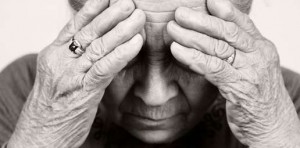
اختلال افسردگی اساسی در بین افراد 60 ساله و بالاتر یا به اصطلاح افسردگی دیرهنگام با نرخ 9 تا 18 % افراد این سنین را درگیر می نماید. افسردگی اساسی دیرهنگام رابطه ی مستقیمی دارد با افزایش میزان خودکشی در افراد این سنین و همچنین استفاده مکرر از مراقبت های
بهداشتی برای این افراد هزینه های درمانی را به طرز قابل توجهی بالا می برد. در بین بیماران دارای اختلال افسردگی اساسی که در دوره های متفاوت زندگی خود هستند عدم تجانس وجود دارد. افراد افسرده ی جوان تر دارای نشانه های بالینی همچون اضطراب بالا، چرخه های متغیر خواب، انرژی و اشتها هستند. افراد میانسال بیشتر دارای یک تصویر کلیشه ای از فقدان لذت، اختلال در خواب، کاهش وزن و اختلالات شناختی و حرکتی می شوند. در اواخر زندگی مولفه های بالینی افراد بسیار متغیر هستند. این موضوع به این دلیل می تواند باشد که افراد مسن نسب به جوان ترها الگوی متفاوتی از بیماری را نشان می دهند. پیش آگهی افسردگی اساسی دیرهنگام بسیار بد است و معمولا با علائمی مزمن بودن، مرگ و میر، خطر ابتلا به اختلالات شناختی و زوال عقل پیشرفت پیدا می کند.

هدف ما در این پژوهش بررسی اثرات بالینی تحریک الکتریکی مستقیم از روی جمجمه (tDCS) به عنوان یک پروتکل درمانی غیر تهاجمی و ایمن در درمان نشانه های افسردگی است. منطق استفاده از tDCS در درمان افسردگی افزایش تحریک پذیری قشر مغز از طریق تحریک آندی و عدم تحریک کاتدی است. یک مطالعه وسیع تر در مورد اثربخشی tDCS وافسردگی توسط بروننی و همکارانش به تازگی منتشر شده است. این مطالعه بر روی 120 بیمار مبتلا به افسردگی اساسی انجام شده است نتایج نشان میدهد که که گروه آزمایش به طور قابل توجهی در علایم نسبت به گروه شم (برای بررسی اثرات پلاسیپو از گروه شم استفاده شد) بهبود را گزارش کردند این بهبود هم در استفاده ازtDCS به تنهایی بود هم همراه با مصرف سرترالین. این نتایج در مطالعات عمده و گروه های پژوهشی دیگر هم تکرار شده است. اما هنوز تاثیرات این درمان در جمعیت افراد خیلی مسن بررسی نشده است.
آقای جی 92 ساله یک بیمار مبتلا به افسردگی اساسی است و مدت 3 سال است که از این بیماری رنج میبرد. این بیمار هیچ تغیر قابل توجهی را در آزمون های مکمل نشان نداده بود. ارزیابی های تصویربرداری عصبی نشان داد هیچ حجم یا تغییراتی غیر وابسته به سن در وی وجود ندارد. در زمان ارائه تحریک بیمار به صورت روزانه از قرص سیتالوپرام 10 استفاده می کردند که هیچ پاسخ بالینی نداشت . در زمان اجرای درمان از طریق tDCS بیمار کاملا مطلع بود که برای افسردگی اساسی تحت درمان قرار گرفته و الزامات دانشکده پزشکی نیز رعایت شده بود. پروتکل درمانی ما در این پژوهش: درمان tDCS، دو (2) میلی آمپری به مدت 10 جلسه برای 30 دقیقه هر روز هفته بود. مکان الکترود آند در ناحیه چپ DLPFC (مطابق سیستم 10/20 ناحیه ی F3) و الکترود کاتد در ناحیه مقابل آن روی جمجمه قرار گرفت. ما برای بررسی علائم افسردگی از تست همیلتون استفاده کردیم و برای ارزیابی علائم اضطراب از تست افسردگی بک و برای بررسی عملکرد شناختی فرد از تست ارزیابی شناختی مونترال بهره گرفتیم. بعد از اتمام 10 جلسه ما با واکنش رضایت مندی مراجع روبه رو شدیم. نمره ی افسردگی فرد در مقیاس همیلتون در مقایسه با نمره ی تست اولیه فرد، 17 نمره کاهش یافته بود (94/4%). و این کاهش در طول 3 هفته پیگیری حفظ شد. نتایج تحلیل و بررسی نشان از تغییرات معناداری در نمره ی فرد در مقیاس اضطراب بک داشت (کاهش از سطح پایه، 16% – 5 تا 6 نمره). و شاخص شناختی فرد در مقیاس ارزیابی مونترال نشان از تاثیر 3/5 % فرد داشت افزایش از سطح پایه 26 تا 27 نمره). این مداخله به خوبی توسط مراجع تحمل شد و هیچ گونه عوارض جانبی هم گزارش شد.
نحوی اثرگذاری سن بر میزان و تاثیرات افسردگی و پاسخ آنها به درمان هنوز نامشخص است. سن می تواند رابطه ی پیچیده ای با اختلال افسردگی داشته باشد. عامل سن با تعداد زیادی عامل های خطر دیگر میتواند در پیش آگهی این اختلال موثر واقع شوند. سالمندان مبتلا به افسردگی احتمال بیشتری دارد که تعداد بیشتر عود بیماری را تجربه نمایند و همچنین طول مدت بیماری هم در این افراد بیشتر است. هر دوی این عوامل در پیش آگهی ضعیف تر این اختلال دخیل هستند. بیماران افسرده ای که در طول زندگی خود تنها در دوره ی میان سالی افسردگی را تجربه می کنند می تواند به دلیل ابتلا بیماری های فیزیکی یا خطر ابتلا به آنها ایجاد شده باشد. در صورتی که مطالعات زیادی به بررسی اثربخشی دارودرمانی در افراد میانسال پرداخته اند. تحقیقات اندکی به صورت مشخص به بررسی مداخلات، مشخصا بر افراد پیرتر همراه با افسردگی اساسی دیرهنگام پرداخته اند.
اخیرا در مقیاس بزرگ، به بررسی درمان ها بر افراد مسن دارای افسردگی پرداخته اند درمان هایی که منجر به تجویز گسترده از مهار کننده ها است و مداخلاتی که بازجذب سروتونین را در مغز بیشتر می کند. از همه مهمتر اینکه این درمان ها با عوارض جانبی همراه است برای مثال افزایش خطر ابتلا به سکته مغزی، تشنج، مرگ زودهنگام و ….
مقایسه افراد مسن مبتلا به افسردگی با افراد پیر تر مبتلا به این اختلال نشان میدهد این افراد بسیار دیرتر به داروهای ضد افسردگی پاسخ میدهند (50% این افراد) و این افراد به بهبودی دست نمی یابند میتوان برای این افراد درمان های غیر دارویی را جایگزین نمود. بررسی تاثیرات بالینی درمان tDCS در اختلال افسردگی درک ما را از استفاده بالینی دقیق از این گونه فناوری های نوین در جمعیت های خاص بالا می برد.

ترجمه : مونا اسبقی – کارشناش ارشد روانشناسی
مرکز نوروتراپی ایرانیان – www.irnfb.com
ستارخان روبروی برق آلستوم پلاک 766 – تلفن : 44221177 – 44221180
29 فروردین – 1395
See discussions, stats, and author profiles for this publication at: http://www.researchgate.net/publication/269468343
Transcranial direct current stimulation for depression in a 92-year-old patient: A case study
ARTICLE in PSYCHOGERIATRICS · DECEMBER 2014 Impact Factor: 1.22 · DOI: 10.1111/psyg.12100 CITATIONS 2 DOWNLOADS 20 VIEWS 56
6 AUTHORS, INCLUDING: Pedro Shiozawa Santa Casa Medicine School, São Paulo 35 PUBLICATIONS 95 CITATIONS SEE PROFILE
Breno Satler Diniz Federal University of Minas Gerais 112 PUBLICATIONS 1,366 CITATIONS SEE PROFILE Quirino Cordeiro
Santa Casa de São Paulo 148 PUBLICATIONS 779 CITATIONS
SEE PROFILE Available from: Breno Satler Diniz Retrieved on: 20 September 2015 LETTER TO THE EDITOR Transcranial direct current stimulation for depression in a 92-year-old patient: a case study Pedro SHIOZAWA,1 Mailu Enokibara da SILVA,1 Danielle zigueira DIAS,1 Ana C CHAVES,2 Breno Satler de OLIVEIRA DINIZ2 and Quirino CORDEIRO11The Clinical Neuromodulation Laboratory,Department of Psychiatry, Santa Casa Medical
School, São Paulo, and 2Department of Psychiatry,Federal University of Minas Gerais, Belo Horizonte,Brazil The prevalence of clinically significant depressive syndromes in people 60 years and older (i.e. late-life depression (LLD)) ranges from 9% to 18%, with incidence rates of 19.3 per 1000 person years.1,2 LLD has been linked to increased rates of suicide and premature mortality and more frequent use of health care with significantly higher health-care costs.3 There is considerable heterogeneity in the clinical presentation of major depression across the life cycle. Younger
patients may have clinical profiles characterized by high trait anxiety and variable patterns of circadian,sleep, energy, and appetite disturbance.4 Those in midlife present the more tereotypic picture of anhedonia in combination with sleep disturbance, weight loss, and cognitive and motor impairments. In
later life, clinical phenotypes are again more variable.5 This may well reflect different neuropathological pathways to illness and largely differentiate those with earlier onset who have grown older from those experiencing clinical depression for the first time. The
prognosis of LLD is typically poor and is characterized by chronicity, mortality, and increased risk for cognitive impairment and progression to dementia.6 We aim to evaluate the clinical effects of using a transcranial direct current stimulation (tDCS) protocol – a non-invasive therapeutic strategy in terms of safety and clinical impact – on depressive symptoms.
The rationale for using tDCS for depression is based on its properties of increasing (anodal) and decreasing(cathodal) cortical excitability. A larger study on depression and tDCS was recently published by Brunoni et al.7 The authors performed a controlled trial involving 120 patients with major depression. The results of this factorial study, in which subjects were randomized to receive active or sham tDCS and verum or placebo sertraline, showed a significant improvement in depressive symptoms for tDCS alone
or combined with sertraline. Favourable results have also been found by other groups studying major depressive disorder.8 To the best of our knowledge, this has not yet been evaluated specifically for the old-old population.
Mr J is a 92-year-old patient who has had major depression for the last 3 years. The patient presented no significant changes in complementary tests.
Neuroimaging evaluation (magnetic resonance imaging) showed no volumetric or structural modifications other than age-related changes. At presentation,the patient was using escitalopram 10 mg/day without clinical response. Given the availability of
tDCS device in our centre, it was decided the patient should undergo a tDCS protocol for major depression.
The patient provided written informed consent in accordance with the requirements of Santa Casa Medical School’s institutional review board. Intervention protocol was as follows: 10 sessions with 2 mA for 30 min (only on weekdays). The anode was placed
over the left dorsolateral prefrontal cortex (F3 according to the 10/20 electroencephalogram system) and the cathode was placed extracephalic at the contralateral deltoid. Depressive symptoms were assessed using the 17-item Hamilton Depression Rating Scale; we evaluated anxiety symptoms with bs_bs_banner
doi:10.1111/psyg.12100 PSYCHOGERIATRICS 2014; 14: 269–270
© 2014 The Authors 269 Psychogeriatrics © 2014 Japanese Psychogeriatric Society the Beck Anxiety Inventory and cognitive function with the Montreal Cognitive Assessment Scale. After 10
sessions, the patient presented with satisfactory clinical response. The Hamilton Depression Rating Scale score decreased by 17 points (94.4%) from baseline,and the decrease was maintained during the 3-week follow-up. Exploratory analysis showed no significant changes for anxiety as assessed by the Beck Anxiety
Inventory (decrease from baseline, 16%; from 6 to 5 points) or cognitive symptoms as assessed by Montreal Cognitive Assessment Scale (increase from baseline, 3.8%; from 26 to 27 points). The intervention was well tolerated and no adverse effects were reported.
How the age of depression onset affects prognosis and treatment response is uncertain. Age may have a complex relationship with depression; it is highly correlated with a number of other known risk factors that affect prognosis. Elderly depressed patients with an early first onset of depression are more likely to have a greater number of relapses in their lifetimes and an overall longer duration of illness; both of these factors are important predictors of poor prognosis. Alternatively,patients presenting with depression for the first time in later life have an increased risk of physical
comorbidities, and physical comorbidity has been associated with a poorer prognosis.9 While there have been many studies investigating response to pharmacological treatments in middle-aged persons, there have been remarkably few studies specifically
focused on assessing interventions in older persons,particularly those with LLD.
A recent large-scale, general practice-based review of treatment of depression in older persons indicated the extent to which the widespread prescribing of selective serotonin re-uptake inhibitors is associated with important side-effects (e.g. falls, hyponatraemia,agitation);10 it also indicated the extent to which some classes of selective serotonin re-uptake inhibitors may
be associated with more significant risks, including increased risk to stroke, seizures, fracture and premature death. Compared to middle-aged patients, older persons may take longer to respond to antidepressant medication, and unfortunately, as many as 50% of
patients with LLD will not achieve remission with the first treatment,11 warranting the need to consider alternative non-pharmacological options in some subgroups.
Evaluating the clinical effects of tDCS protocols on depressive symptoms is fundamental to our understanding of the precise clinical uses of this new technology among specific populations.
REFERENCES
1 Luijendijk HJ, van den Berg JF, Dekker MJ et al. Incidence and
recurrence of late-life depression. Arch Gen Psychiatry 2008;65: 1394–1401. doi: 10.1001/archpsyc.65.12.1394.
2 Beekman AT, de Beurs E, van Balkom AJ, Deeg DJ, van Dyck R,
van Tilburg W. Anxiety and depression in later life:
co-occurrence and communality of risk factors. Am J Psychiatry
2000; 157: 89–95.
3 Katon WJ, Lin E, Russo J, Unutzer J. Increased medical costs of
a population-based sample of depressed elderly patients. Arch
Gen Psychiatry 2003; 60: 897–903.
4 Hansell NK, Wright MJ, Medland SE et al. Genetic co-morbidity
between neuroticism, anxiety/depression and somatic distress
in a population sample of adolescent and young adult twins.
Psychol Med 2012; 42: 1249–1260.
5 Blazer DG. Depression in late life: review and commentary. J
Gerontol A Biol Sci Med Sci 2003; 58: 249–265. Review.
6 Djernes JK, Gulmann NC, Foldager L, Olesen F,
Munk-Jørgensen P. 13 year follow up of morbidity, mortality and
use of health services among elderly depressed patients and
general elderly populations. Aust N Z J Psychiatry 2011; 45:
654–662.
7 Brunoni AR, Valiengo L, Baccaro A et al. The sertraline vs.
electrical current therapy for treating depression clinical study:
results from a factorial, randomized, controlled trial. JAMA Psychiatry
2013; 70: 383–391.
8 Shiozawa P, Fregni F, Benseñor IM et al. Transcranial direct
current stimulation for major depression: an updated systematic
review and meta-analysis. Int J Neuropsychopharmacol 2014;
17: 1443–1452.
9 Subramaniam H, Mitchell AJ. The prognosis of depression in
late life versus mid-life: implications for the treatment of older
adults. Int Psychogeriatr 2005; 17: 533–537.
10 Coupland C, Morriss R, Arthur A, Moore M, Hill T, Hippisley-Cox
J. Safety of antidepressants in adults aged under 65: protocol
for a cohort study using a large primary care database. BMC
Psychiatry 2013; 13: 135.
11 Roose SP, Schatzberg AF. The efficacy of antidepressants in
the treatment of late-life depression. J Clin Psychopharmacol
2005; 25 (4 Suppl 1): S1–S7.
P. Shiozawa et al.
270 © 2014 The Authors
Psychogeriatrics © 2014 Japanese Psychogeriatric Society

